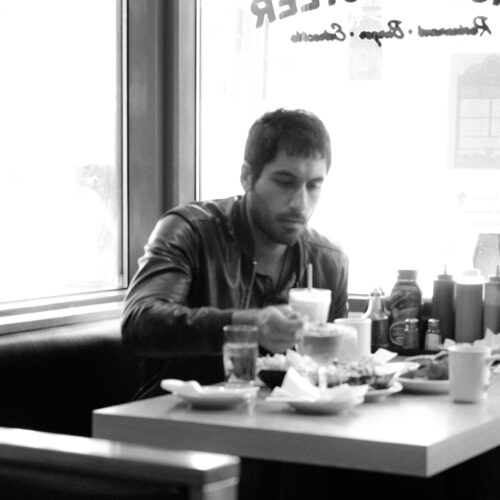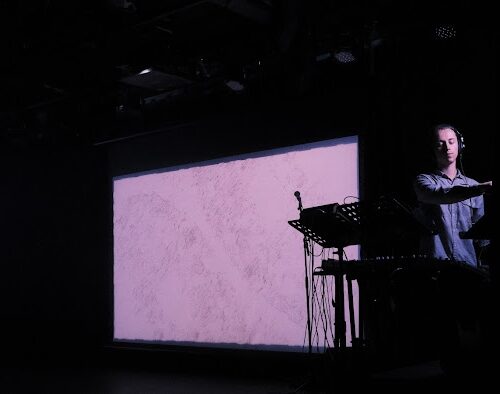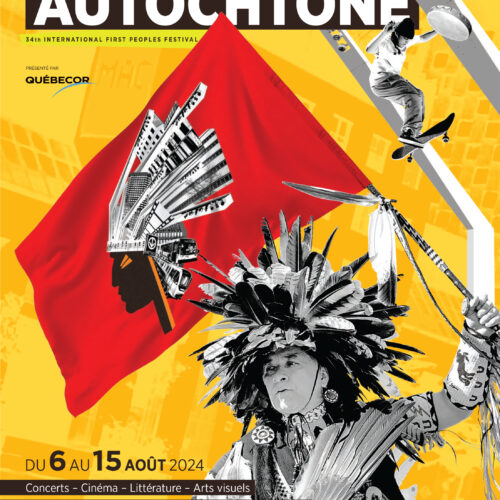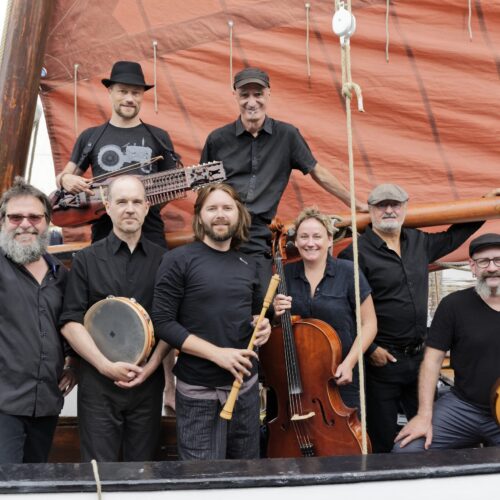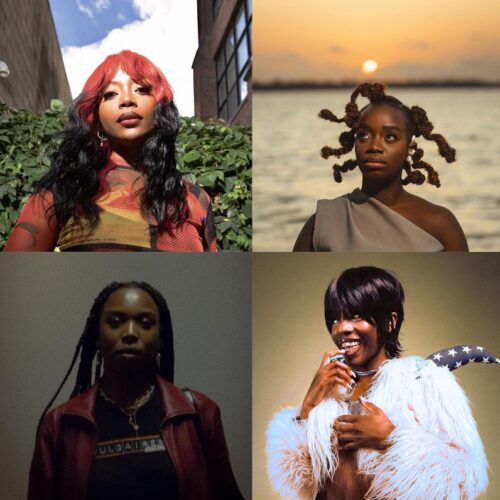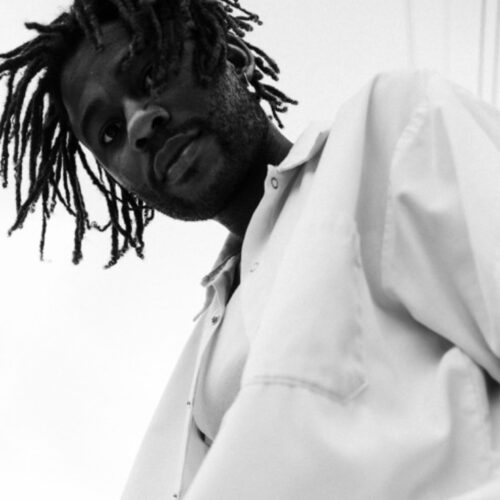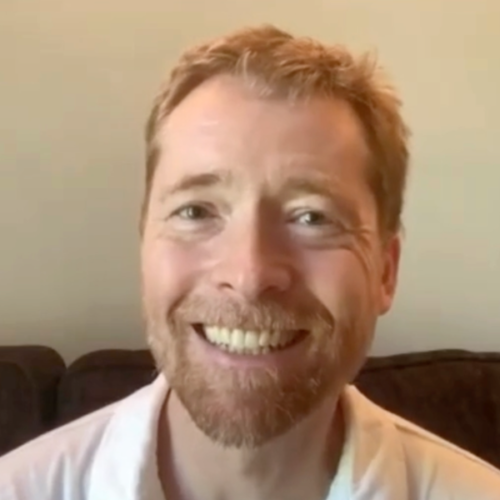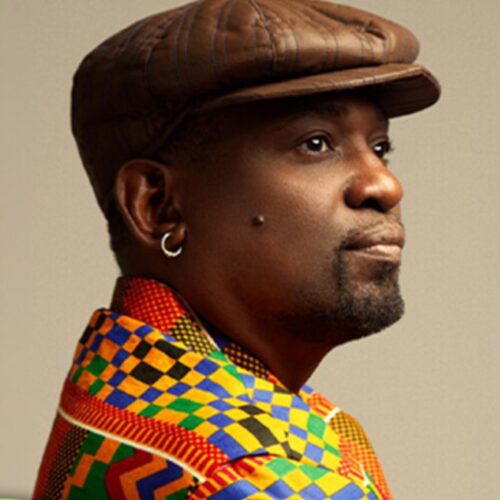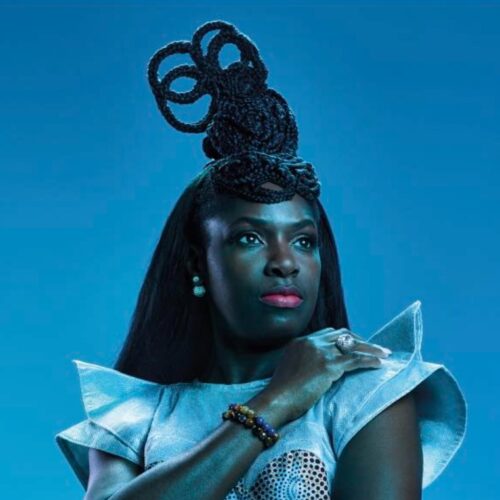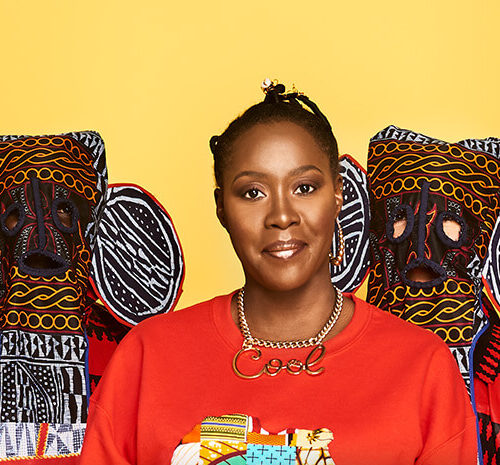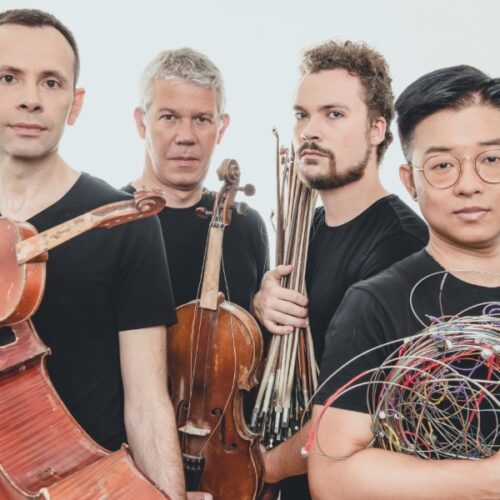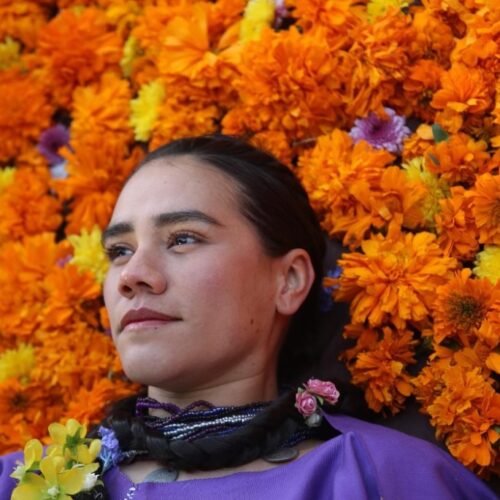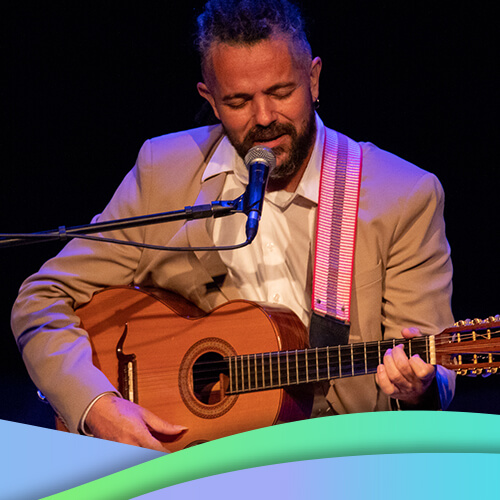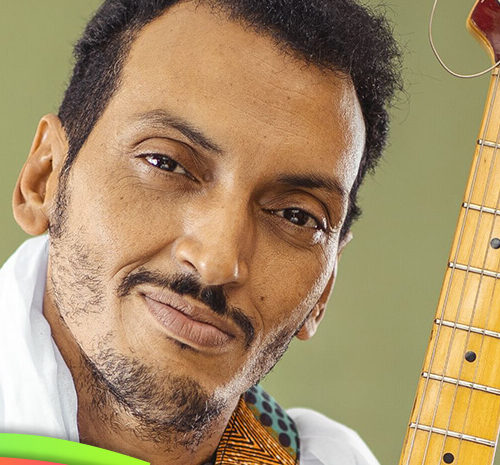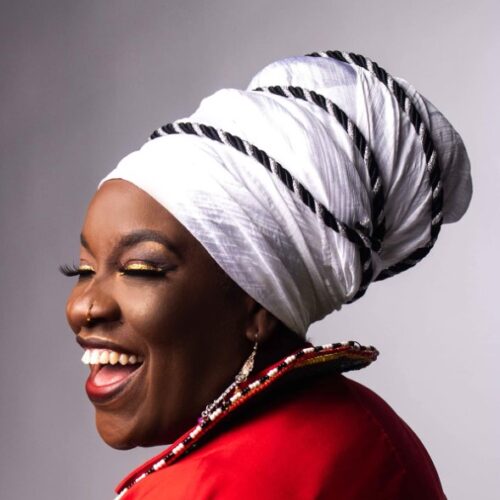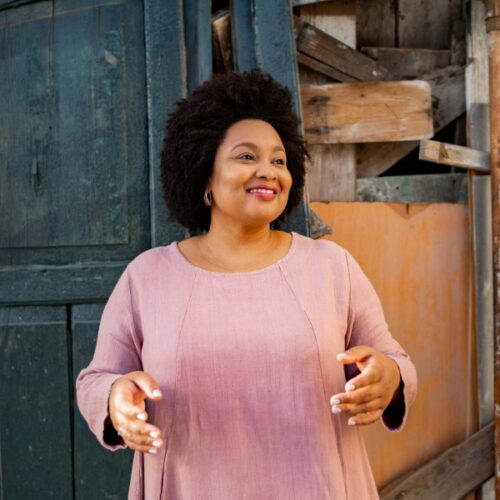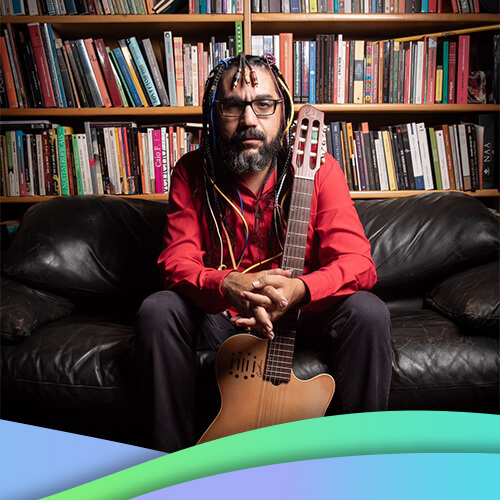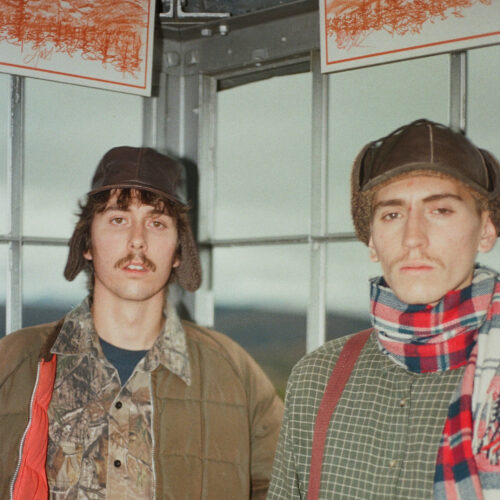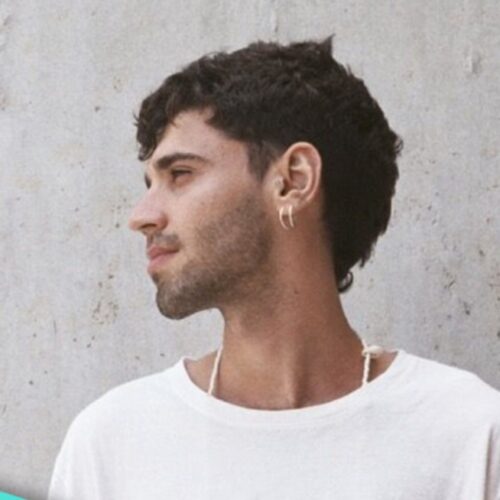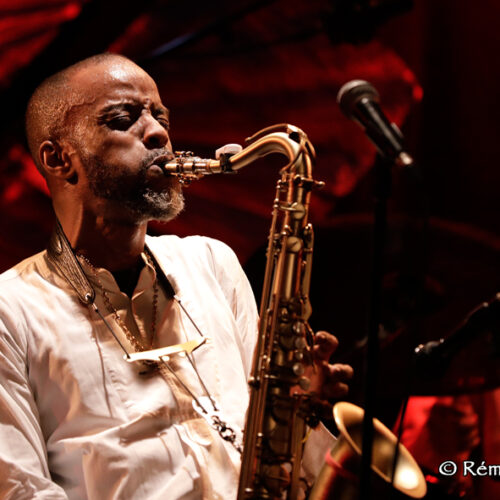Additional Information
Photos: Stian Andersen et Vanessa Heins
Is there a common sensibility among women artists with northern origins? With the help of our colleague and friend Jeremy Spellazon, PAN M 360 thought it appropriate to bring together two writers, composers, and performers with Arctic origins, loved and recognized south of the Arctic Circle. The great-grandmother of Ane Brunvall, better known by the diminutive Ane Brun (pronounced An-ha Broon), came from the Sami people living in the Arctic regions of Scandinavia. Elisapie, for her part, is a full-fledged Inuit and curious to talk to her Norwegian interlocutor, who has lived two decades in Sweden and is considering leaving Stockholm to settle in Oslo, where her husband lives.
Ane Brun and Elisapie courteously accepted our proposal, the other pretext being the imminent release of two albums of new songs by Ane Brun, from the same creative cycle: After the Great Storm and Ow Beauty Holds the Hands of Sorrow, on the Balloon Ranger label.

PAN M 360: Many thanks to you ladies for having accepted this invitation! The first question is at the heart of this encounter: is there a common sensibility for artists from the far north?
Elisapie: Yes, I think so! Having been in Kautokaino, in the northern part of Norway, I felt strange at that time because I discovered the humour of the Sami people, the same humour as my people in Nunavik. Oh my goodness, that was so close! I haven’t been there for performing, but for a documentary film. My biggest, biggest regret is not having worked hard enough to make things happen in the northern countries. But next time!
Ane Brun: What was the documentary about ?
Elisapie: It was a film on the polar-circle peoples, I could go to Alaska, Siberia, Greenland, Norway, and northern Canada. In Norway, I could eat reindeer recipes, I loved it! It was an amazing experience. And you, Ane, are you from the northern part of Norway?
Ane Brun: No. I grew up in Molde, halfway between the south and the north of Norway, but my mom’s family is from the north – an hour driving from Tromsø. Her grandmother was Sami, so we have a straight line.
PAN M 360: More precisely, what do Sami people have in common with Inuit people in Nunavik?
Elisapie: The first thing I really felt is the very calming rhythm. This is a different territory from the Sami territory, but the presence of the people is quite similar. I mean people being in the moment. And also when you live something with Sami people and a friendship is possible, it’s not halfway. Something is marked forever. People open up very quickly. Inuit people experience the same openness in my Indigenous community. Once you are in their world and environment, it is open. So that is really what I felt in Norway, it was family.

Ane Brun: It’s nice! We Norwegians don’t know the Sami language. There is still a barrier, we don’t get a chance to really step into the atmosphere that exists up there. By the way, The Sami language is quite present in the North, there is a Sami presence in the government, there is Sami language on the TV, but is is always subtitled .
Elisapie: It’s the same here in Canada. Inuktitut is one of the most difficult languages to learn. You know, I thought there would be common roots in our two languages, but no. The Sami langage is totally different from Inuktitut.
Ane Brun: Personally, I have never been in the Sami culture, even if my great-grandmother was Sami. Otherwise, my mother tried to rediscover this culture, she tried to connect with relatives and started digging in our family history. She discovered that when her grandmother was alive, it was quite difficult to be a Sami during her life, there was a lot of discrimination. You know the singer Mari Boine? Even for her generation, it was really hard. Until recently, Sami people were forced to speak Norwegian, to go to Norweigian school, there were religious expectations and cultural assimilation. In Sweden and Norway, there’s a really sad story about how Indigenous people were treated. That changed not a long time ago, I can imagine that some of my mom’s ancestors didn’t want to live as Sami people because it was really hard, but my mom wanted to rediscover, she reconnected with relatives and knew more about the tribe where we come from. Later, people from my generation learned about this inequality, it’s quite recent. There was a great Swedish movie called Sami Blood that also had an important impact on our awareness. And I have myself had a chance to sing with Mari Boine and also with Sofia Jannok, another Sami artist – Sofia had permission from Bon Iver to translate some of his songs into the Sami language, so she made an EP of Bon Iver songs, and I got to sing in Sami with her. With Mari Boine as well, we wrote a song together for a TV show where Scandinavian artists were coupled with Sami artists. Then we met for three days to write the song and I got to know the amazing Mari Boine better. It became a beautiful song, she used the joik singing.
Elisapie: I also met Mari Boine, I opened for her in Belgium. She is magical, her presence is almost scary!
PAN M 360: How do each of you identify the Northern aspects of your craft?
Elisapie: I think it is unconscious but… If I write a song, I can say that I have to look outside, I must have window to see the sky. Where I am from, there are no trees and a lot of horizon. I left the North when I was 23, it’s still very present in my mind. Life is hard in my community, the suicide rate is high, people try to get their shit together. There is that sense of the North everywhere I go and I am. Even now in Montreal, I’m getting to know myself in a stronger way. And I think my roots are coming back to me a lot more. I have three children now, I try to find many things since I’m a mother, and funnily, I feel I’m more Inuk than ever. I don’t live daily the traditions of my people – food, hunting, etc. – but I reflect partly on this life when I write songs. But I try to be in the moment, not intellectualize my work too much while I am creating. I think it’s a Northern way of seeing things.

Ane Brun: For me, inspiration from the North is the nature as well. I connect with nature. You and me, Elisapie, also have the same age in common… because I checked your profile on Wikipedia (haha!). So we are both in the middle of our lives. I lived in Sweden for 20 years and I’m in the process of moving back in Norway because my partner is in Oslo (where I am actually speaking to you from). Since two or three years, I could connect with my Norwegian roots. Sweden is not far away but it’s different, with a different history, so I have been longing to come back I feel that I’m connected to those first 20 years of my life, so that is kind of your same feeling of being connected with your roots. So in my songwriting lyrics, I use a lot the nature. I grew up in a very beautiful place with the fjords, the sea, and the mountains. And I know when I write about big emotions, nature is the element that come up, it’s the wind, it’s the water, the ocean, the waves, the mountains, the temperature. I remember having studied the Norwegian composer Edvard Grieg when I was a teenager, they were talking about the importance of nature in his music, and I didn’t get it at that time. Now I look back on my own music and I can see it. It does inspire me, it does influence me that I had the nature so close to me.
Elisapie: It is awesome the way you talk about nature. I also have a lot of anori – wind, in Inuktitut – in my songs. The wind purifies! The natural elements can be very harsh in the North but also very beautiful and symbolic. It is the same thing for me. I am more in touch and in tune with that in my songwriting.
Ane Brun: The darkness in the North during the winter is also important. We are about to get in the darkest times of the year, the sun goes down at 3 pm…
PAN M 360: What about artists from the far north being based in big cities?
Elisapie: The North never leaves you in the big cities where we live. North is gorgeous, harsh, tough, spectacular, those very strong elements make you an outsider, in a way, when you live in the south. At the beginning, when I moved to Montreal, I was so excited to live in a big city, to meet new people, learn new languages, live new experiences, eat new food and on and on. But after a while, you ask yourself questions. Me, what am I, really? I feel I missed out so much by leaving my family, my little cousins, my friends. When it gets dark and Christmas is coming, I start to think about my family… but I’m still such an independent person. So one side of me is longing but the other side of me made a decision of living with that decision. I am happy where I am, but certainly I bring the North with me in my personal life. I am very connected, but I don’t always share it. Songwriting becomes interesting when you open this little bubble, more fragile, more vulnerable, all this ancient culture becomes my guard. For me, the North is a source of inspiration and challenge.
Ane Brun: I was 19 when I moved away from my small town. I didn’t look back until I started longing a few years ago. Nature is also different in Sweden. I’m kind of moving away from the big cities more and more because I have done it for 25 years and I still access it through my work. Oslo is a big city of course, but not as big as Stockholm is. I don’t feel the same way in Oslo. For sure, the things that I grew up with are carried around with me.

Elisapie: The first time I heard your music was a while ago. A friend of mine told me that I must hear your music. And I did, it really dit hit me then. I really love your music, I think you have a very singular voice, every time you do new music, it’s very strong. I’m just curious to know, who did you listen to? We all have many influences, but you must have one person that made your voice the way it is, that emotion that you have, that you connect to?
Ane Brun: I think there are quite a few! First, my mother is one of them, she is a musician, she sings and plays piano. She’s quite bold in her singing… and growing up like that, I didn’t sing and make my music until my twenties. I didn’t think myself about singing until I turn 20. And didn’t think about my influences until more recently, but now I know that my childhood must have influence me a lot. I think it’s a big mix of everything. Jazz singers for the phrasing in a different genre, and big stars like Annie Lennox, and also more whispering and obscure singers. So it’s a mix of many things, you know. When I first heard my voice on tape, I liked it. It has developed on its standing point, I tried to expand it all the time, always tried to explore with the microphone, reverb, etc. and explore what it could do. My sound have been developed by me listening, trying to fine something warm and connecting.
Elisapie: You made many albums, it’s amazing. Where do you think you are now with your expression?
Ane Brun: I made two albums released this fall. I really tried to do two different outputs, the second coming now (November 27) is more relaxed. I tried different things and I observe that my voice is more versatile now. I can do a lot with it, it’s something that I developed through live shows. So the two new albums have been recorded in the same cycle. At first I was going to record one album, and I had 16 songs. The songs on the first album are bigger sounding, you can move to it, lots of beats, more elaborate production. And then in the studio, a few songs didn’t want to be that big. So I let them become small. And then I listen the recordings and I wasn’t happy with three of the “big songs”. I also made them small songs, and I finally had other small songs, enough not to be released at the same time. So I decided to make two albums from the same cycle of music. We released one different song each month during the last months, so we had many singles. Releasing all those singles was an experiment, we didn’t know if it would be too much, and it finally worked out really well. It created a momentum. When the first album came out a few weeks ago, people were still interested.
Elisapie: I love that you have your own label! I also love the idea of releasing two albums almost at the same time. People are so afraid to try new things!
Ane Brun: Yeah! It’s a good thing, actually. It’s been very interesting for us as a label, we combined the old way and new way to release my music.
PAN M 360: Could we have a few more words about the second album, with those songs that wanted to be small ?
Ane Brun: My father passed away. I first shut down and took a break. When I started writing , a moment after, big life questions came up. Midlife, roots, missing my own country, my little town, etc. The lyrics are about griefs, also existentialism, I’ve been kind of my own philosopher, my own Buddha. A lot of of big issues are on these albums. Weirdly enough, this year brought up similar questions as well, so those songs are still relevant, even though they were written last year! Some journalist said that the most recent album is very empathetic and the previous one is darker. Indeed, the new small songs are more empathetic, those songs didn’t want to be big and roaring, they wanted to be like whispers. That’s what they’re supposed to be for people. It’s quite sad sometimes, but it is also comforting and soft. While the other one can be quite dramatic, it also connected with the same big issues, but with a different output.

Elisapie: It’s almost like you are comforting yourself!
Ane Brun: As you say! And yes, I tried something different. About yourself, Elisapie, did you sing as a teenager?
Elisapie: Like you, Ane, I experienced the singer in me later on, which was a good thing. I was around 23. New life for an Inuk girl, identity crisis and more… Of course, I’ve sung since I was a kid, I did it first at the church… I liked it because that was the only place where I could sing! And we didn’t have music school or other institutions to learn music. There was also my amazing uncle’s rock band, so I loved music as a teenager. But I was so shy that it took me a long time tell myself, yeah, I could sing.
Ane Brun: I just watched your Tiny Desk session. Great!
Elisapie: Thank you! It happened a year ago and my last album was out two years ago. Probably new things will be added this year in my creative agenda. Since spring, I was supposed to write new songs, but I couldn’t – many things happened, especially for Indigenous people in Quebec. A lot of awareness and also tragic things happened in the Indigeno-sphere, in the lights of Black Lives Matters. An event has been very important: an Indigenous woman died in a regional hospital after having been badly treated, in such an horrible manner. But she filmed her bad treatment with her phone before dying, so it shocked everybody here. There is now a movement called Justice for Joyce (her name) and it touches many people, even including children at elementary schools. “Hello Elisapie, I’m singing a song in Inuktitut!”, a kid told me. In my oldest daughter’s high school, teachers spoke about this tragic event and all this ugliness. Also, people get more and more aware of relocation of Indigenous people in the past, and also horrible treatment in residential schools over many years. So all this new awareness is very positive. Hopefully this winter, I will shut up and write new songs in my little bubble, inspired by the wind and other natural elements.
Ane Brun: Maybe you will also be inspired by those events.
Elisapie: Yeah! By some hope and some beauty. There is a lot of beauty that needs to come out.
Ane Brun: Will you write in Inuktitut?
Elisapie: I have a feeling that my Inuktitut is not limited as it was. Our language is very simple, very day tot day. Having a kind of Bob Dylan poetical approach is not a very Inuit way of seeing things, but… I think so much is going on, I find new vocabulary in our language. It will be much more fun for me, playing with words. So yeah, the elastic is looser.
Ane Brun: Maybe you are partly responsible for this expansion of the language.
Elisapie: Yeah, possibly! People want to hear who we are, much more than, “Okay she’s from the cold.” We are also human beings with feelings, passionate, intense. We are all much more than people from the cold and the white snow. So Ane, let’s keep in touch!
Ane Brun: Yes! I will talk to music festival organizers to invite you to Scandinavia!
